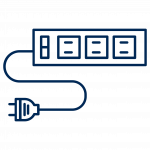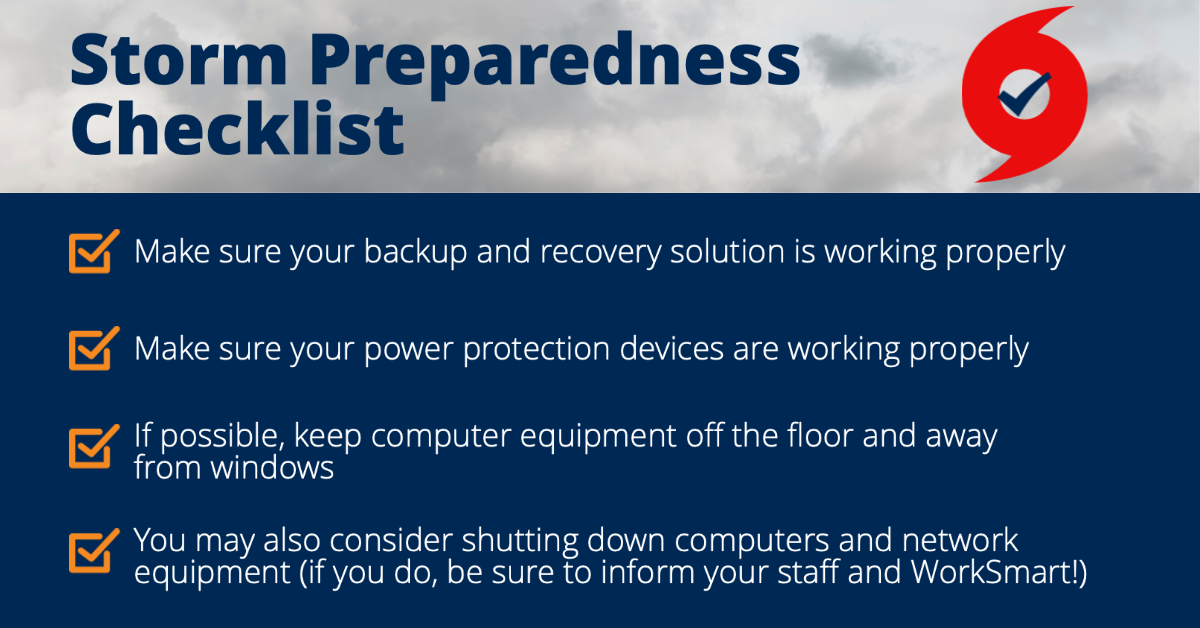Whether it’s a snowstorm that knocks out the power or a hurricane that brings floodwaters – bad weather can have extremely unpredictable damage that ensues because of it.
When this happens, it’s important to make sure you take proper precautionary steps to help protect your IT infrastructure and data from the potential repercussions of a storm.
Don’t get caught in the storm… taking preemptive action can save your organization valuable time and money in the long run. Here are a few things to consider when securing your most important assets:
Step 1: Ensure that your backup and recovery solution is working properly
| No matter the amount of proactive steps taken, data loss happens. Oftentimes, it’s unpredictable and sudden, especially if some sort of natural disaster or weather incident causes it.
Making sure that you have the right backup and recovery solutions in place will help you stay productive and worry less in case of an issue. Should something happen to your data, the right tools will help you recover what you need in a timely and cost-efficient manner. Plus, it’s always a good idea to test your backups beforehand. Don’t wait until something happens to your data to put your backup solution to the test. This way, if your backup is capturing only some of what you need, you can adjust before you have no other option. |
 |
Step 2: Make sure your power protection devices are working properly
| Power outages are unpredictable and can happen in the blink of an eye. While it may not seem like a big deal for the power to be shut off, it can be extremely damaging to your IT infrastructure if the proper precautions aren’t taken.
Unexpected power failures will cause your devices and systems to shut down improperly, causing damage to your hard drive. With it being an essential component that stores your data, damage to the hard drive can quickly result in a data loss situation. Power protection tools are crucial in preventing unforeseen outages or surges from damaging your infrastructure. Whether its a simple surge protector or an interruptible power supply, having these tools in place will save your organization valuable resources in case of an emergency. |
 |
Step 3: Keep computer equipment off the floor and away from windows
| While this may not always be feasible, it’s important to try and keep your devices and any other equipment in an elevated spot, away from windows as much as possible.
It’s often difficult to predict just how strong a storm will be before it arrives. Because of that, you can only know if your building will take any damage after the fact. Flood damage and broken windows can lead to unrepairable devices and equipment that can cost a lot of money to replace. Keeping your things up off the floor and away from windows will help protect them from flood waters and potential glass shatters that a heavy storm may bring. |
 |
Step 4: Consider shutting down computers and network equipment
| When possible, it’s a good idea to consider shutting down your computers and network equipment when a storm is moving in. As mentioned above, power surges and outages can be extremely dangerous to your infrastructure.
If a device is shut down, it’s protected from these power issues that could cause long-term or even irreparable damage. If you decide to do this, be sure to let your team and your managed IT provider know what’s going on so that they are in the loop as well! |
 |
Storms can be unpredictable. However, taking proactive steps such as these can help protect your most valuable assets in the event of a disaster.
Want to learn more about securing your infrastructure? Contact us today!


